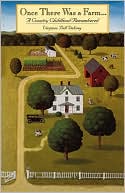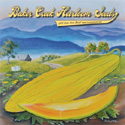Tue 12 Jan 2010
Winter Reading: Seed Catalogs and more
Posted by Bob under Farms and Food, Vegetable Garden
[2] Comments
I guess most non-gardeners would think I spent a ridiculous amount of time this period of each year poring over seed catalogs. But what gorgeous displays many of them have become, and with the growth of interest in heirloom plants, they are goldmines of historical as well as horticultural information. Who can resist names like Cherokee Trail of Tears Bean, Pennsylvania Dutch Crookneck Squash, Paul Robeson Tomato, Bloody Butcher Corn, or Fife Creek Cowhorn Okra? When combined with all the luscious catalog photos, it’s easy to understand Barbara Kingsolver’s husband’s reported quip in Animal, Vegetable, Miracle that it might be more efficient for her to circle the items that didn’t tempt her, rather the ones that did!
The four catalogs pictured above: Seed Savers Exchange, Baker Creek Heirloom Seeds, Johnny’s Selected Seeds, and Southern Exposure Seed Exchange are my current favorites for varying reasons–vision, diversity, horticultural information, and regional focus, among others. I’ve ordered seeds from all of them and the arrival of their catalogs around the new year feels like a visit from old friends. Recently I’ve also discovered three online catalogs that have nice special features: Cherry Gal not only offers an impressive variety of heirloom seeds but also packets with half the usual number of seeds (generally more than enough for most gardeners) at half the price. Renee’s Garden Seeds, while somewhat more limited in its offering, combines color-coded seeds of different varieties of a given vegetable in the same packet, allowing one to get what one wants in one packet instead of several (I also like the detailed growing information right on the seed packet, rather than having to refer back to the catalog). And Amishland Heirloom Seeds provides unusually-detailed information on many hard-to-find heirloom tomatoes and other vegetables and flowers.
Beyond seed catalogs, retirement has produced a fairly eclectic range of reading, but increasingly I’ve recognized a pattern involving the material bases of culture and history, with a parallel effort to broaden my woefully-limited scientific background. This started with Alfred Crosby’s Ecological Imperialism: The Biological Expansion of Europe, 900-1900, a book that had been sitting on my bookshelf for twenty years, while it influenced others like Jared Diamond, who popularized many of its ideas. Other good reads in this vein were Greg Grandin’s Fordlandia: The Rise and Fall of Henry Ford’s Forgotten Jungle City, and Henry Hobhouse’s Seeds of Change: Five Plants That Changed the World. (A re-reading of Michael Pollan’s Botany of Desire also provided food for thought.) Recently my son Tim came by with The Invention of Air: A Story Of Science, Faith, Revolution, and the Birth of America, which I appropriated for the duration of his stay and found to be a fascinating account of British scientist and radical theologian Joseph Priestley, his long-term intellectual relations with Benjamin Franklin and Thomas Jefferson, and his eventual flight as a political refugee to the backwoods of Pennsylvania. While I’d known about his role in the discovery of oxygen, I was unaware of his being the first to grasp the fact that plants gave off oxygen through what we now understand as photosynthesis. He was in a sense, then, the founder of ecological studies. Currently I’m reading and enjoying Bill Bryson’s A Short History of Nearly Everything, which I’d listened to while driving to and from Virginia, but am getting much more out of by actually reading it. How Bryson manages to serve up such a broad smorgasbord of basic science while being consistently funny and entertaining constantly amazes me. But I’m learning a lot!
 Among other books read: Monika came across Virginia Bell Dabnay’s Once There Was a Farm: A Country Childhood Remembered in our local library, and her enthusiasm led me to read it too. What a great read! Without nostalgia or sentimentality, Virginia Bell Dabnay (1919-1997) provides a beautiful elegy for a life few would want to live today but which nonetheless hauntingly reminds us of what we have lost in our mostly paved-over industrial consumerist society. Dabney describes her growing up on a farm in central Virginia with her strong-willed mother and two sisters (her strange bird of a father lived in Chicago during most of her upbringing, until he moved uncomfortably to the farm when he retired). Coincidentally, in later life, she bought a place not far from our new home in Roseland, which she abandoned in disgust when the Wintergreen development came in the 1970s, moving later on to the Allehgeny Mountains in western Virginia.  With its intimate portrait of the hardships and rewards of rural life in the 1920’s and 1930’s, filled with amazingly-vivid stories and with unobtrusive but powerful insights into family, race relations, friendship, and community, it’s a deeply moving, and for me, unforgettable, book.
Among other books read: Monika came across Virginia Bell Dabnay’s Once There Was a Farm: A Country Childhood Remembered in our local library, and her enthusiasm led me to read it too. What a great read! Without nostalgia or sentimentality, Virginia Bell Dabnay (1919-1997) provides a beautiful elegy for a life few would want to live today but which nonetheless hauntingly reminds us of what we have lost in our mostly paved-over industrial consumerist society. Dabney describes her growing up on a farm in central Virginia with her strong-willed mother and two sisters (her strange bird of a father lived in Chicago during most of her upbringing, until he moved uncomfortably to the farm when he retired). Coincidentally, in later life, she bought a place not far from our new home in Roseland, which she abandoned in disgust when the Wintergreen development came in the 1970s, moving later on to the Allehgeny Mountains in western Virginia.  With its intimate portrait of the hardships and rewards of rural life in the 1920’s and 1930’s, filled with amazingly-vivid stories and with unobtrusive but powerful insights into family, race relations, friendship, and community, it’s a deeply moving, and for me, unforgettable, book.




I just started reading “Why School? Reclaiming an Education for all of us” by Mike Rose. I got it off Bill Moyers best of 2009 book list, and while I’ve just started it, I think it’s gonna be a great read. It will be a nice break from reading about the removal of a gallbladder or nursing research (interesting but lengthy). Hope all is well!
Great! Glad to hear that this recommendation from Bill Moyers is a good one–I’ll have to take a look myself. While I generally think of Moyers as pretty much infallible, I have to say that another book on his 2009 list, Rebel Giants (about Darwin and Lincoln, who happened to be born on the same day), turned out to be a very disappointing book for me–very shallow and (especially for a sociological reader) far too much simplistic psychologizing about both men. That one can be skipped.
Reading suggestions from all welcome!